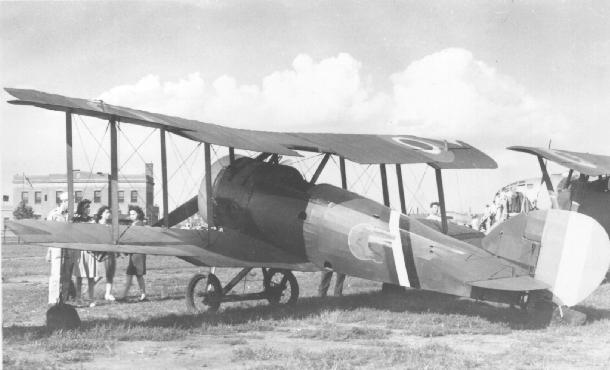 |
Sopwith Snipe |  |

|
|
|---|---|---|---|---|
 |
||||
| The Sopwith Snipe was the successor to the Sopwith Camel. | ||||
|
The Snipe had a confused history prior to its entry into service. Its early handling problems were not completely solved before beginning squadron operations. Even with 100 hp more power, it was only slightly faster than the Camel which it was designed to replace. Not more than 100 Snipes reached France before the end of World War I. After the war the Snipe was adopted as the standard RAF fighter, and production continued into 1919. A total of 497 were built, with the last not retiring until 1926.
The Snipe is considered to be the ultimate development of the small rotary-engined fighter. While almost as manoeuvrable as the Camel, the Snipe was much less tricky to fly. One of the outstanding single-handed air battles of the war occurred when Major W.A. Barker, a Canadian pilot, fought off a formation of fighters. After shooting down a two-seater, he was set upon by 15 Fokker D.VIIs. Although wounded in both legs and one arm, he managed to destroy three of his opponents before crashing. He survived and was awarded the Victoria Cross. | ||||
| Specifications: | ||||
|---|---|---|---|---|
| Sopwith Snipe 7F.1 | ||||
| Dimensions: | ||||
| Wing span: | 31 ft 1 in (9.50 m) | |||
| Length: | 19 ft 10 in (6 m) | |||
| Height: | 9 ft 6 in (2.90 m) | |||
| Weights: | ||||
| Empty: | 1,312 lbs (595 kg) | |||
| Maximum T/O: | 2,020 lbs (916 kg) | |||
| Performance: | ||||
| Max. Speed: | 121 mph (195 km/hr) | |||
| Service Ceiling: | 19,500 ft (5,940 m) | |||
| Climb to 6,000 ft (1,980 m): |
5 min., 10 sec. | |||
| Range: | 3 hours endurance. | |||
| Powerplant: | ||||
| One 230 hp Bently B.R.2 rotary engine. | ||||
| Armament: | ||||
| Endnotes |
|---|
| 1. | |
© The Aviation History On-Line Museum. All rights reserved.
Updated June 21, 2008.